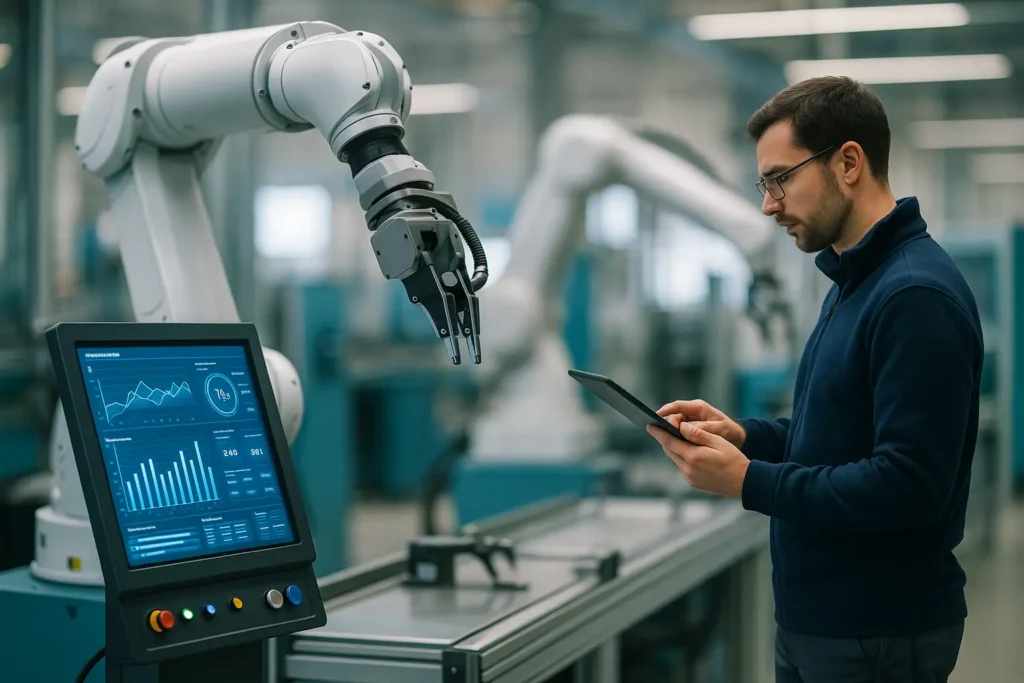In the bustling world of modern manufacturing and industrial operations, the concept of predictive maintenance has emerged as a revolutionary approach reshaping how we handle equipment and systems. Imagine a world where we can anticipate and prevent costly failures before they occur, minimizing downtime and maximizing efficiency. With the advent of the Internet of Things (IoT) and advanced machine learning models, this is no longer a distant dream but a tangible reality. Today, let’s explore why predictive maintenance is being hailed as the new gold standard in industry, how it leverages data and condition-based technologies, and what it means for companies worldwide.
The Evolution from Preventive to Predictive Maintenance
As we dive into the realm of maintenance strategies, it’s essential to understand the distinction between preventive and predictive maintenance. For decades, companies have relied on preventive measures, scheduling regular check-ups and servicing for their machines, much like the routine visits to a doctor. While preventive maintenance has its merits, it also carries inefficiencies, often leading to unnecessary downtime and higher costs.
Enter predictive maintenance, a modern approach that shifts the focus from time-based schedules to condition-based insights. By harnessing real-time data collected from sensors embedded in machinery, we can now predict when a piece of equipment is likely to fail, allowing us to intervene before any disruption occurs. The result? A more efficient and cost-effective system that reduces not only operational disruptions but also the overall maintenance budget.
Predictive maintenance is powered by advanced technologies like IoT and machine learning, which analyze vast quantities of data to identify patterns and predict potential failures. By moving from a reactive to a proactive approach, we are stepping into a future where downtime becomes a rare occurrence, and operational efficiency reaches new heights.
Harnessing the Power of Data and IoT
The backbone of predictive maintenance lies in the seamless integration of IoT devices and data analytics. With sensors continuously monitoring the condition of equipment, we collect invaluable real-time data on temperature, vibration, usage, and more. This constant flow of information allows us to construct detailed models of how machines behave under various conditions, giving us a window into their health and performance.
Leveraging machine learning algorithms, we can process this data to develop predictive models that forecast potential failures. These models are constantly refined, learning from new data points to enhance their accuracy and reliability. The result is a system that not only anticipates problems before they arise but also recommends specific interventions, such as parts replacements or recalibrations, precisely when needed.
By adopting condition-based maintenance strategies, companies can optimize their resources, dedicating their efforts only when and where they are truly needed. This marks a significant departure from the old paradigm of scheduled maintenance, fostering a culture of efficiency and innovation across industries.
Real-World Applications and Benefits for Companies
The transition to predictive maintenance is not just a theoretical concept—it’s a transformative process bringing tangible benefits to companies worldwide. From the automotive industry to pharmaceuticals, businesses are reaping the rewards of reduced downtime, enhanced safety, and improved asset longevity.
Consider a major manufacturing plant employing thousands of machines. With traditional maintenance practices, unplanned downtime can lead to significant losses, both financially and in terms of production. However, with predictive maintenance, potential failures are identified well in advance, allowing timely interventions that avert costly disruptions.
Moreover, adopting predictive maintenance enhances workplace safety. By addressing equipment issues proactively, the risk of catastrophic failures is minimized, protecting both machinery and personnel. This focus on safety, combined with the operational benefits, makes it a compelling choice for industries aiming to stay competitive in today’s fast-paced environment.
Beyond immediate operational benefits, the insights gained from predictive maintenance provide strategic advantages. Data-driven decision-making becomes a cornerstone of company strategy, informing everything from resource allocation to future investment in technology.
The Future Path: Challenges and Opportunities
While the benefits of predictive maintenance are clear, the path to widespread adoption is not without challenges. Integrating IoT devices and data analytics into existing systems requires upfront investment and expertise. Companies must also address concerns related to data security and privacy, ensuring that sensitive information is protected in the digital age.
Yet, with these challenges come immense opportunities. As technologies continue to evolve, the predictive maintenance landscape will become even more sophisticated. Innovations in AI and machine learning will refine predictive models, making them more precise and adaptable. The IoT ecosystem will expand, offering new ways to monitor and maintain equipment across industries.
In this rapidly changing environment, companies that embrace predictive maintenance will gain a competitive edge. By leveraging real-time insights, they can streamline operations, reduce costs, and enhance efficiency, ultimately positioning themselves as leaders in their respective fields. The journey to predictive maintenance is a strategic venture, one that promises not only immediate returns but long-term success.
As we stand at the precipice of this new industrial era, the shift toward predictive maintenance heralds a future where equipment downtime is minimized, and operational efficiency is maximized. By embracing data-driven strategies and cutting-edge technologies, we are not just maintaining systems—we are transforming them.
Predictive maintenance represents a proactive approach to manufacturing, where foresight replaces hindsight, and intervention occurs before disruption. It’s a testament to the power of technology to revolutionize industries, setting a new standard for excellence across the board. As companies continue to adapt and innovate, the promise of a more resilient, efficient, and sustainable future becomes not just a possibility but a reality.
FAQ
What is predictive maintenance, and how does it differ from traditional maintenance methods?
Predictive maintenance is a proactive approach that uses data analysis tools to predict when equipment might fail, allowing for timely maintenance. Traditional maintenance often relies on routine checks or fixes only after a breakdown occurs, which can lead to increased downtime and costs.
How does predictive maintenance benefit industrial operations?
Predictive maintenance helps in reducing downtime, increasing equipment lifespan, and optimizing resource allocation. By predicting failures before they happen, industries can plan maintenance activities more efficiently, leading to cost savings and improved operational efficiency.
What technologies are typically used in predictive maintenance?
Predictive maintenance relies on a combination of sensors, data analytics, machine learning algorithms, and IoT devices. These technologies collect and analyze data from equipment to predict potential failures, enabling timely intervention.
What industries can benefit most from implementing predictive maintenance strategies?
Industries with extensive use of machinery and equipment, such as manufacturing, oil and gas, utilities, and transportation, can significantly benefit from predictive maintenance. By preventing unexpected breakdowns, these sectors can maintain continuous operations and reduce maintenance costs.
What are some challenges businesses face when adopting predictive maintenance?
Adopting predictive maintenance can be challenging due to the initial investment in technology and training, integrating new systems with existing infrastructure, and ensuring data accuracy. However, the long-term benefits often outweigh these initial hurdles.



